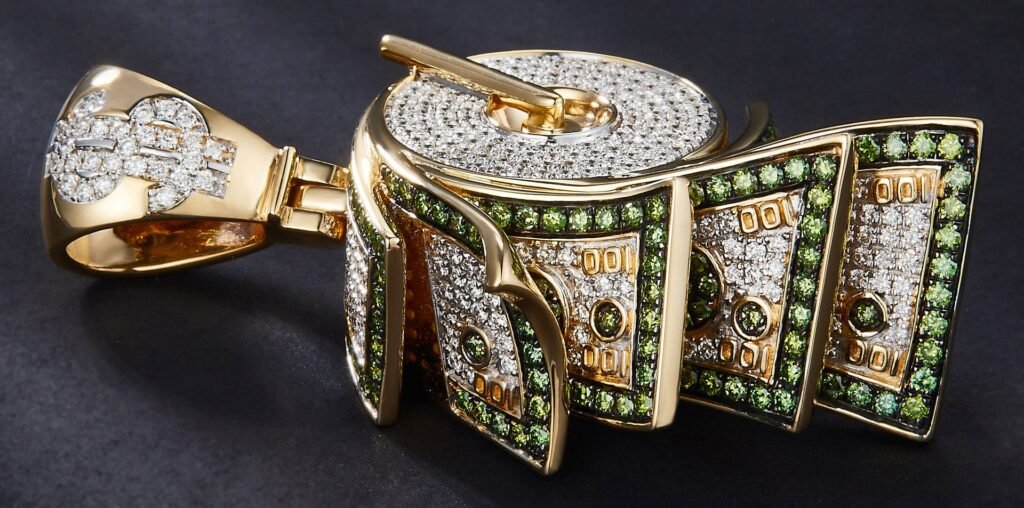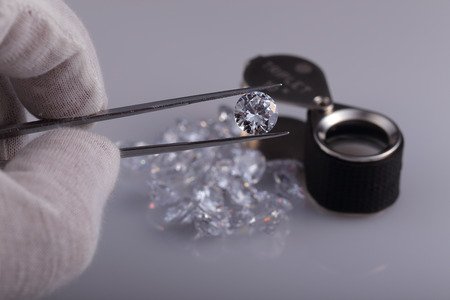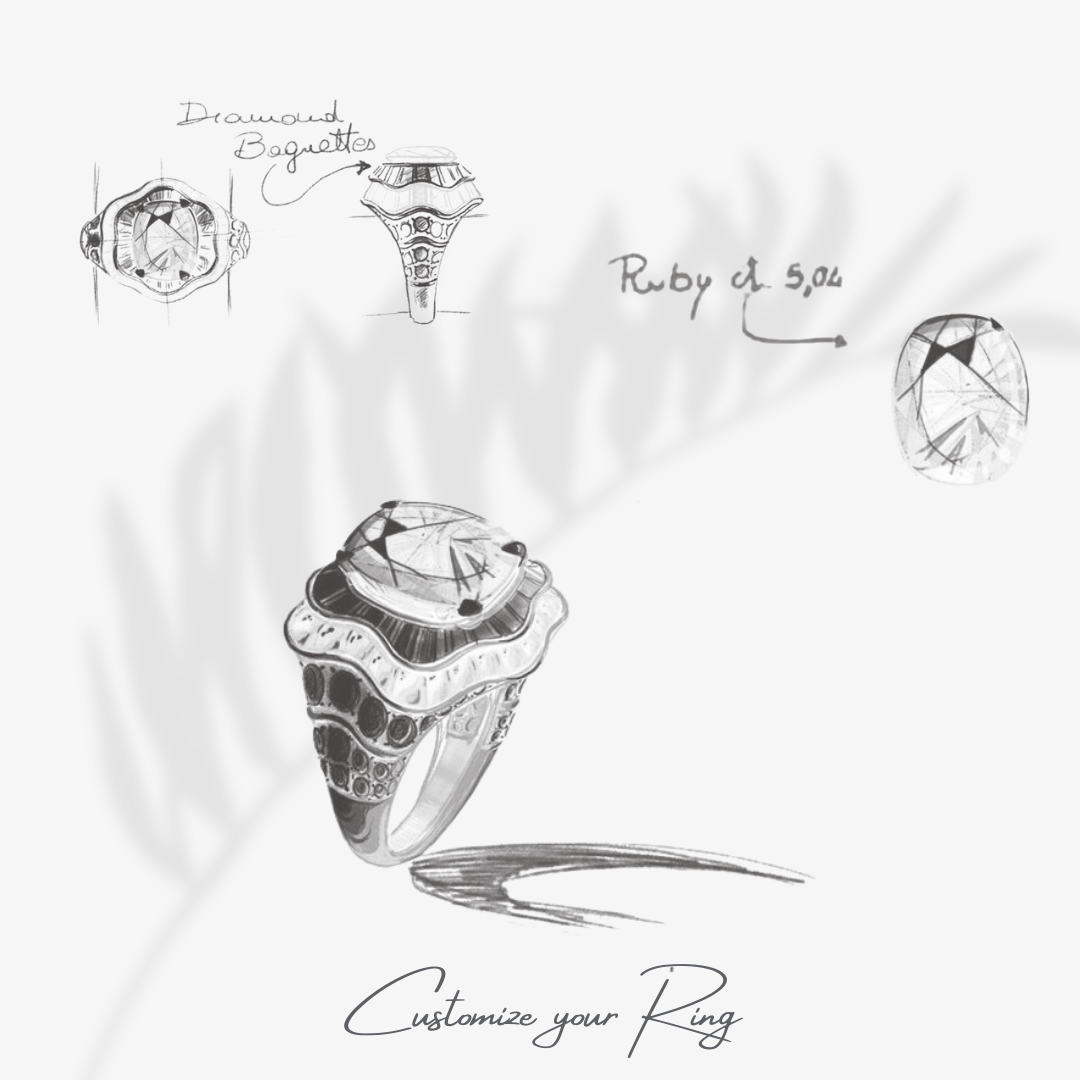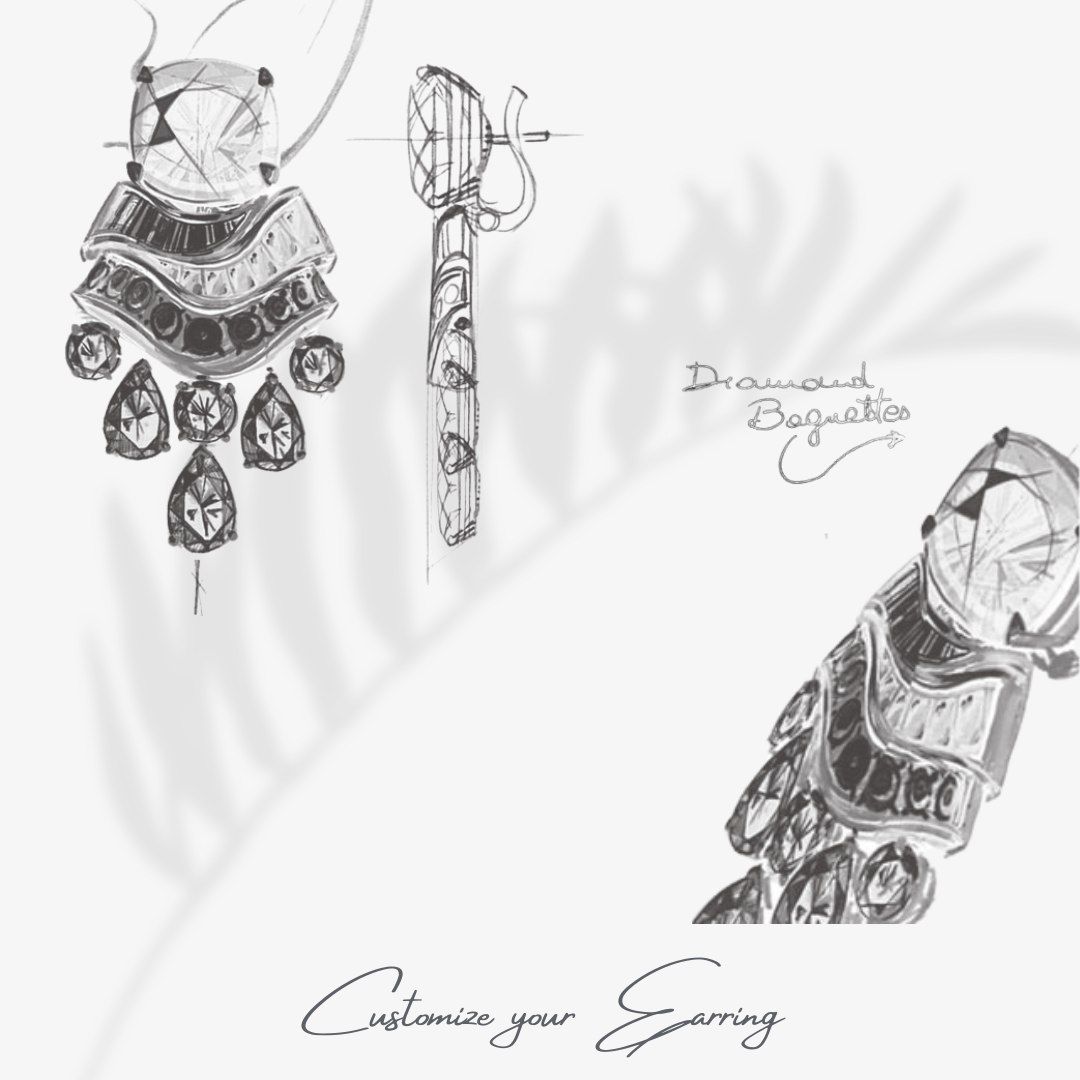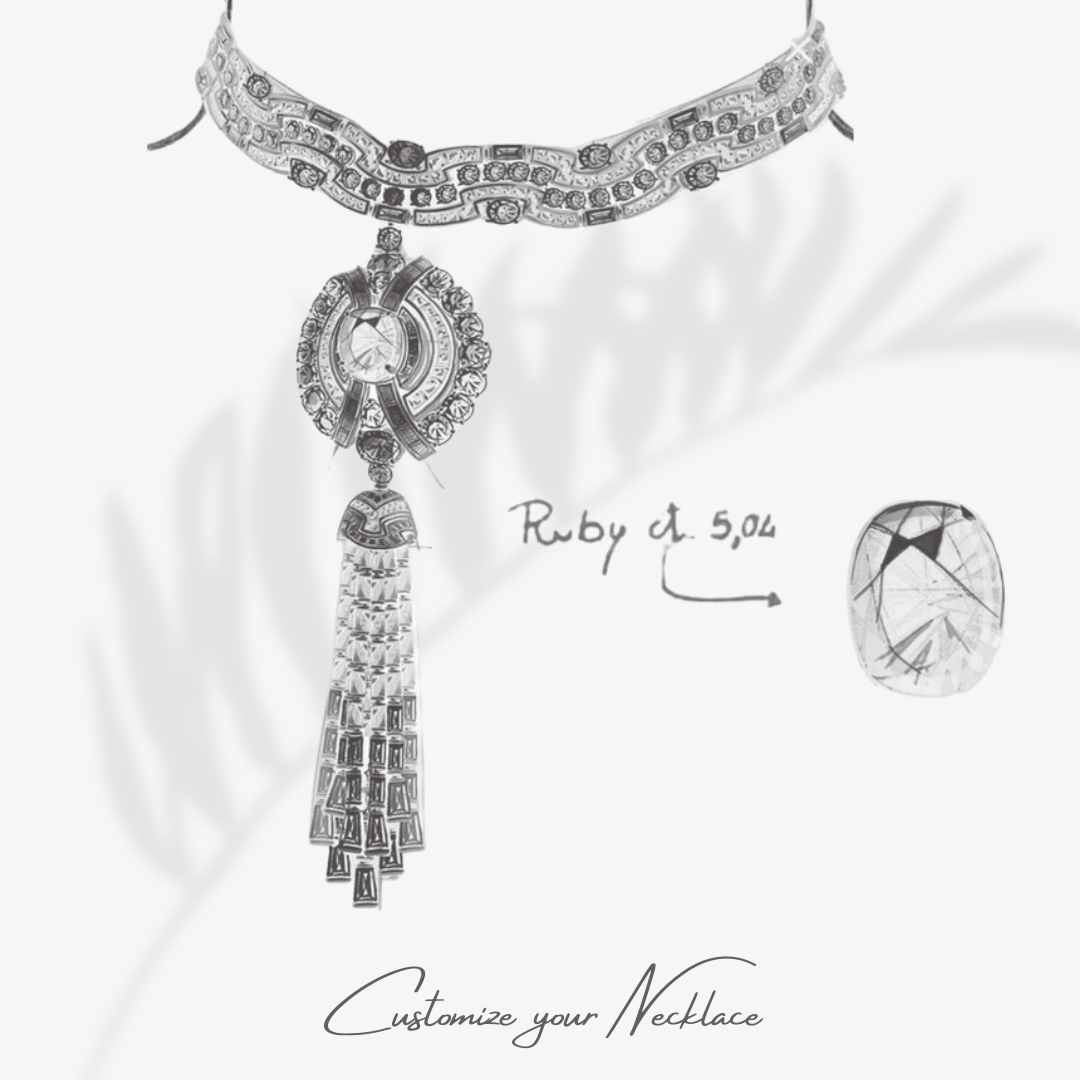Learn About Diamonds
Lab-grown diamonds, also known as synthetic diamonds or man-made diamonds, are diamonds that are created in a laboratory environment rather than being formed naturally beneath the Earth's surface. They have gained popularity in recent years due to their ethical and environmental advantages, as well as their high quality. Here's a detailed overview of labgrown diamonds and what you need to know before buying them
Diamond fluorescence is graded on a scale that ranges from "None" to "Very Strong" by reputable gemological laboratories such as the Gemological Institute of America (GIA).
Formation and Production
Lab-grown diamonds are created using two primary methods:
High-Pressure High-Temperature (HPHT):
This method simulates the high-pressure and high-temperature conditions deep within the Earth's mantle where natural diamonds are formed. Carbon is subjected to extreme pressure and temperature to crystallize into diamond.
Chemical Vapor Deposition (CVD):
In this method, a diamond seed is placed in a chamber filled with carbon-rich gases. The carbon atoms gradually accumulate on the seed, forming a diamond crystal layer by layer
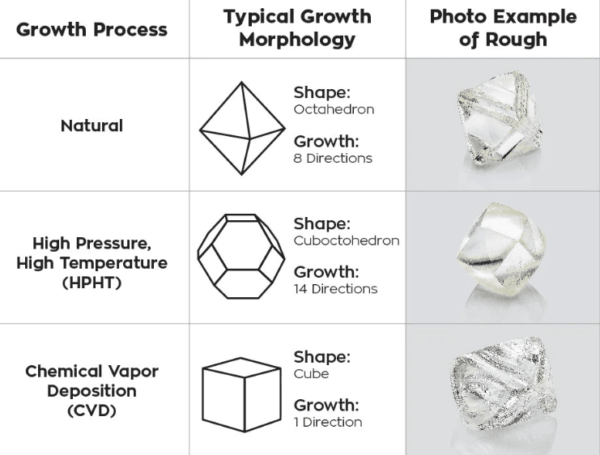
The 4Cs of Diamond
Cut:
The cut of a lab-grown diamond refers to how well it has been shaped, faceted, and polished. The quality of the cut has a significant impact on a diamond's overall appearance, brilliance, and sparkle. A well-cut lab-grown diamond will have precise angles and facets that maximize its light performance.
Carat:
Carat weight measures the size of a lab-grown diamond. One carat is equivalent to 200 milligrams. Our diamonds are available in various carat weights, and the choice depends on personal preferences and the design of the jewelry.
Color:
Our Lab-grown diamonds are graded on a color scale that ranges from D (colorless) to Z (light yellow or brown). The less color a lab-grown diamond exhibits, the higher its color grade and value. Colorless or near-colorless lab-grown diamonds are highly sought after.
Clarity:
Clarity assesses the presence of internal or external flaws, known as inclusions and blemishes, respectively, in lab-grown diamonds. The clarity scale ranges from Flawless (no imperfections visible under 10x magnification) to Included (imperfections visible to the naked eye). Lab-grown diamonds with fewer imperfections are considered more valuable.
Shapes of Diamond

Round Brilliant:
The round brilliant cut is the most popular and classic diamond shape. It is known for its exceptional sparkle and fire, with 57 or 58 facets that maximize light reflection.
Princess:
Princess-cut lab-grown diamonds are square or rectangular with pointed corners. They offer a modern and elegant look, often with sharp, clean lines.
Emerald:
Emerald-cut diamonds have a rectangular shape with cut corners. They are characterized by a large, open table and step-cut facets that create a hall-of-mirrors effect.
Oval:
Oval-cut lab-grown diamonds combine the brilliance of round diamonds with an elongated, elegant shape. They can appear larger than round diamonds of the same carat weight.
Marquise:
Marquise-cut lab-grown diamonds have an elongated, boat-shaped outline with pointed ends. They create a dramatic and eye-catching look.
Pear:
Pear-shaped lab-grown diamonds, also known as teardrop diamonds, have one rounded end and one pointed end. They offer a unique and versatile appearance.
Radiant:
Radiant-cut diamonds have a square or rectangular shape with trimmed corners. They are known for their brilliance and can appear larger than other shapes of the same carat weight.
Cushion:
Cushion-cut lab-grown diamonds have a square or rectangular shape with rounded corners. They provide a vintage and romantic look with their soft, pillow-like appearance.
Ascher:
Ascher-cut diamonds are similar to emerald-cut diamonds but are square with step-cut facets. They have a classic and Art Deco-inspired appearance.
Heart:
Heart-shaped lab-grown diamonds are romantic and symbolic. They have a distinct heart outline and are popular for engagement rings and special occasions.
Cut Grade of Diamonds
The cut grade assesses the quality of a diamond's cut and how well it interacts with light. It is typically graded on a scale from Excellent to Poor.
Facets:
Diamonds have multiple flat surfaces called facets. The arrangement and angles of these facets determine how light enters, reflects, and exits the diamond.
Angles and Proportions:
The angles and proportions of the diamond's facets play a critical role in how it handles light. Well-cut diamonds have precise angles and proportions that maximize brilliance and sparkle.
Light Performance:
A well-cut diamond exhibits optimal light performance, with light entering through the table (top facet), reflecting internally, and returning to the viewer's eye with maximum brightness and fire.
Brilliance:
Brilliance refers to the brightness of the white light that a diamond emits.
Fire:
Fire refers to the colorful flashes of light (rainbow-like effect) that a well-cut diamond displays.
Scintillation:
Scintillation refers to the sparkle or pattern of light and dark areas that result from the diamond's movement or changes in lighting.
Here's an explanation of the different clarity grades for lab-grown diamonds:
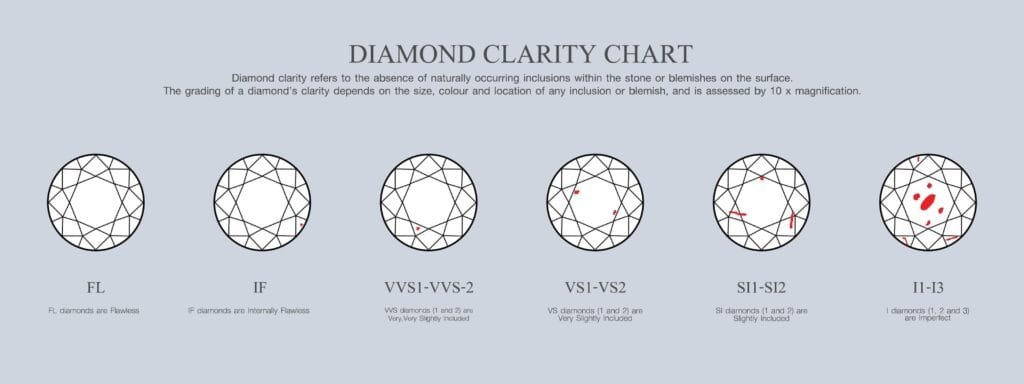
Flawless (FL) and Internally Flawless (IF)
Lab-grown diamonds in these categories have no internal or external imperfections visible under 10x magnification. Flawless diamonds are exceptionally rare and highly prized.
Very, Very Slightly Included (VVS1 and VVS2)
These diamonds have very tiny inclusions that are difficult for a skilled grader to detect even under 10x magnification. VVS diamonds are of excellent quality and have minor imperfections.
Very Slightly Included (VS1 and VS2)
In this range, lab-grown diamonds have small inclusions that are somewhat easier to see under 10x magnification but are still considered very good in terms of clarity. They may have minor imperfections but are generally eyeclean, meaning that the inclusions are not visible to the naked eye.
Slightly Included (SI1 and SI2)
Lab-grown diamonds in this category have noticeable inclusions when examined under 10x magnification. SI1 diamonds may have inclusions that are difficult to see without magnification, while SI2 diamonds may have more noticeable inclusions. Some SI2 diamonds may have inclusions visible to the naked eye, depending on their size and location.
Included (I1, I2, and I3)
Diamonds in this category have inclusions that are easily visible under 10x magnification, and some may have inclusions visible to the naked eye. These diamonds tend to be less expensive due to their lower clarity grades and reduced visual appeal.
It's important to note that the clarity grade of a lab-grown diamond can significantly affect its price. Diamonds with higher clarity grades (e.g., Flawless, VVS) are typically more valuable because they have fewer imperfections, which can enhance their brilliance and sparkle.
Ideal Cut Diamond
Proportions:
An ideal cut diamond is cut with precise proportions that maximize its brilliance and fire. It typically has a table percentage of around 53-58% and a depth percentage of around 59- 62%.
Light Performance:
Ideal cut diamonds are known for their exceptional light performance. They exhibit excellent brilliance, fire, and scintillation.
Appearance:
These diamonds are highly sought after due to their stunning visual appeal. They appear bright and lively, with a balanced play of white light (brilliance) and colorful flashes (fire).
Deep Cut Diamond
Proportions:
A deep cut diamond has proportions where the depth percentage is higher than the ideal range (typically over 62%). This means the diamond is cut deeper than ideal.
Light Performance:
Deep cut diamonds may not perform as well in terms of brilliance and fire because they allow light to escape through the pavilion instead of being reflected back to the viewer's eye.
Appearance:
Deep cut diamonds may appear darker or less lively due to the inefficient use of light.
Very Shallow Cut Diamond
Proportions:
A very shallow cut diamond has proportions where the depth percentage is lower than the ideal range (typically below 59%). This means the diamond is cut shallower than ideal.
Light Performance:
Very shallow cut diamonds may also underperform in terms of brilliance and fire. Light can leak out of the bottom of the diamond, reducing its sparkle.
Appearance:
These diamonds may appear glassy or lackluster due to the poor light performance.
Diamond Proportions
Table Percentage:
The table percentage is the ratio of the width of the table facet to the overall width of the diamond. It affects the diamond's appearance and light performance.
Depth Percentage:
The depth percentage is the ratio of the diamond's depth (from the table to the culet) to its width. It influences how well the diamond reflects and refracts light
Crown Height:
The crown is the top portion of the diamond above the girdle. Its height relative to the pavilion (bottom portion) influences the diamond's brilliance.
Pavilion Depth:
The pavilion is the lower portion of the diamond below the girdle. Its depth affects how light exits the diamond.
Girdle Thickness:
The girdle is the widest part of the diamond, and its thickness can vary. A well-proportioned girdle ensures the diamond is stable and secure in a setting.
Culet Size:
The culet is the small facet at the bottom of the diamond. Its size can affect light reflection and symmetry.
What is Diamond Fluorescence ?
Diamond fluorescence refers to the phenomenon where a diamond emits a visible glow when exposed to ultraviolet (UV) light. It is a natural characteristic of some diamonds and is evaluated as part of a diamond's overall quality assessment.
Here are key points to understand about diamond fluorescence:
Causes of Fluorescence
Diamond fluorescence occurs due to the presence of trace elements, typically nitrogen, within the diamond's crystal structure.
When UV light, which is not visible to the human eye, interacts with these trace elements, it causes them to emit visible light, often in a bluish or whitish hue.
The strength of fluorescence can vary, with some diamonds exhibiting strong fluorescence, while others may show only faint or negligible fluorescence.
Grading Fluorescence
Diamond fluorescence is graded on a scale that ranges from "None" to "Very Strong" by reputable gemological laboratories such as the Gemological Institute of America (GIA).
The possible fluorescence grades are "None," "Faint," "Medium," "Strong," and "Very Strong."
Impact on Diamond Appearance
In most lighting conditions, especially daylight or incandescent light, fluorescence is not visibly apparent, and it does not affect a diamond's appearance.
Some individuals may even prefer diamonds with fluorescence because it can make the diamond appear slightly whiter, counteracting any faint yellowish tints.
However, in rare cases where a diamond exhibits very strong fluorescence and is exposed to strong UV light (such as sunlight with a significant UV component), it can appear hazy or milky, affecting transparency.
Are Lab Grown Diamond just as real as Natural Diamond ?
Answer is “Yes! Lab-grown diamonds are indeed real diamonds; they share the same chemical, physical, and optical properties as natural diamonds. They are composed of carbon atoms arranged in a crystal lattice structure, just like diamonds formed in the Earth's mantle. Due to their identical chemical composition, lab-grown diamonds are often referred to as "synthetic" or "man-made" diamonds.
The realness of Lab-Grown Diamonds include:
Chemical Composition:
Lab-grown diamonds are composed of pure carbon atoms, just like natural diamonds. Both types of diamonds are made of carbon arranged in a crystal lattice structure.
Hardness:
Diamonds are the hardest known natural material, and lab-grown diamonds exhibit the same exceptional hardness.
Refractive Index:
Both lab-grown and natural diamonds have a high refractive index, which contributes to their brilliant sparkle.
Dispersion:
Dispersion is the ability to split white light into its spectral colors, creating a rainbow effect. Lab-grown diamonds, like natural diamonds, exhibit dispersion.
Luster:
Lab-grown diamonds possess the same luster and reflective qualities as natural diamonds, giving them their characteristic brilliance.
Durability:
Lab-grown diamonds are highly durable and resistant to scratches and abrasions, just like natural diamonds.
Certification:
Reputable gemological laboratories, such as the Gemological Institute of America (GIA) and the International Gemological Institute (IGI), grade and certify lab-grown diamonds to confirm their authenticity and quality.
Is it possible to influence the characteristics and attributes of a labgrown diamond while it's being created?
Yes! you can choose the quality of a lab-grown diamond during its production to a certain extent. Lab-grown diamonds offer a level of customization that is not possible with natural diamonds, allowing you to specify various characteristics according to your preferences and requirements.
Here's how you can influence the quality of a lab-grown diamond during its production:
Carat Weight:
You can choose the desired carat weight for your lab-grown diamond. The larger the carat weight, the more valuable and visually prominent the diamond will be.
Cut:
You can specify the cut grade for your labgrown diamond. The cut significantly affects a diamond's brilliance and sparkle. You can choose from cut grades such as Excellent, Very Good, Good, Fair, or Poor, similar to natural diamonds.
Color:
Lab-grown diamonds are available in a range of colors, from colorless (D) to light yellow or brown (Z) on the GIA color scale. You can select the color grade that suits your preferences, budget, and the design of your jewelry.
Clarity:
Just like natural diamonds, lab-grown diamonds can have internal inclusions and external blemishes. You can choose the clarity grade based on your preference for a flawless appearance or a more budget-friendly option.
Shape:
Lab-grown diamonds can be produced in various shapes, including round, princess, emerald, oval, and more. The choice of shape is a matter of personal preference and the design of your jewelry piece.
Fluorescence:
Lab-grown diamonds can exhibit fluorescence when exposed to ultraviolet (UV) light. You can specify whether you want a diamond with fluorescence or prefer one without it.
Origin:
Some lab-grown diamond producers offer options for the diamond's origin, such as whether it is HPHT-grown or CVD-grown. This choice may not directly affect quality but allows you to make an informed decision about the diamond's production method.
Customization:
In some cases, you can request specific characteristics or design elements for a lab-grown diamond, such as a particular inclusion pattern or specific proportions.
Difference between Lab grown Diamond Vs Mined Diamond
1. Origin
Lab-Grown:
These diamonds are created in a controlled laboratory environment using advanced technology that replicates the natural diamond-growing process. They are often referred to as synthetic or man-made diamonds.
Mined:
These diamonds are formed deep within the Earth's mantle over millions of years and are extracted from mines through mining processes.
2. Environmental Impact
Lab-Grown:
Generally considered more environmentally friendly, as the diamondgrowing process consumes less energy and water and generates fewer greenhouse gas emissions compared to traditional diamond mining.
Mined:
The process of mining can have a significant environmental impact, including habitat disruption, soil erosion, and water pollution. Some mines are working to minimize their environmental footprint, but challenges remain.
3. Cost
Lab-Grown:
Lab-grown diamonds are often more affordable than mined diamonds, especially for diamonds with similar quality characteristics. This affordability can be appealing to consumers.
Mined:
Mined diamonds can be more expensive, with factors like rarity, size, and quality influencing their price.
4. Rarity and Value
Lab-Grown:
While they are not as rare as some natural diamonds, lab-grown diamonds can still be quite valuable, especially those with high quality and larger carat weights.
Mined:
Natural diamonds are considered rare and have a long history of being highly valuable due to their limited supply.
5. Quality and Appearance
Lab-Grown:
Lab-grown diamonds can have the same chemical composition and physical properties as natural diamonds. They are available in various qualities, including colorless and fancy colors, and can exhibit excellent brilliance and sparkle.
Mined:
Natural diamonds come in a wide range of qualities, from flawless to included, and may have varying colors and characteristics. Some people value the uniqueness and natural history of mined diamonds.
6. Certification
Lab-Grown:
Reputable lab-grown diamond producers provide certifications that verify the diamond's authenticity and quality.
Mined:
Natural diamonds are typically certified by reputable gemological laboratories like the Gemological Institute of America (GIA).
How does the extraction and production of Natural Diamond affect the environment?
Habitat Destruction:
Diamond mining often involves clearing large areas of land, including forests and ecosystems, to access diamondbearing deposits. This habitat destruction can lead to the displacement of wildlife and disruption of ecosystems.
Soil Erosion:
The removal of vegetation during mining can lead to soil erosion, reducing soil fertility and impacting local agriculture.
Water Usage:
Diamond mining operations typically require significant amounts of water for processing and dust suppression.
Water Pollution:
The discharge of wastewater and chemicals used in diamond processing can lead to water pollution, affecting water quality in rivers and streams near mining sites.
Energy Consumption:
The diamond mining and extraction process can be energy-intensive, particularly in deep underground mines or in remote locations where energy infrastructure may be lacking. This can contribute to greenhouse gas emissions and environmental impacts associated with energy production.
Carbon Footprint:
The overall carbon footprint of natural diamond mining includes emissions from exploration, mining, processing, and transportation.
Community Disruption:
Diamond mining can disrupt local communities and traditional ways of life.
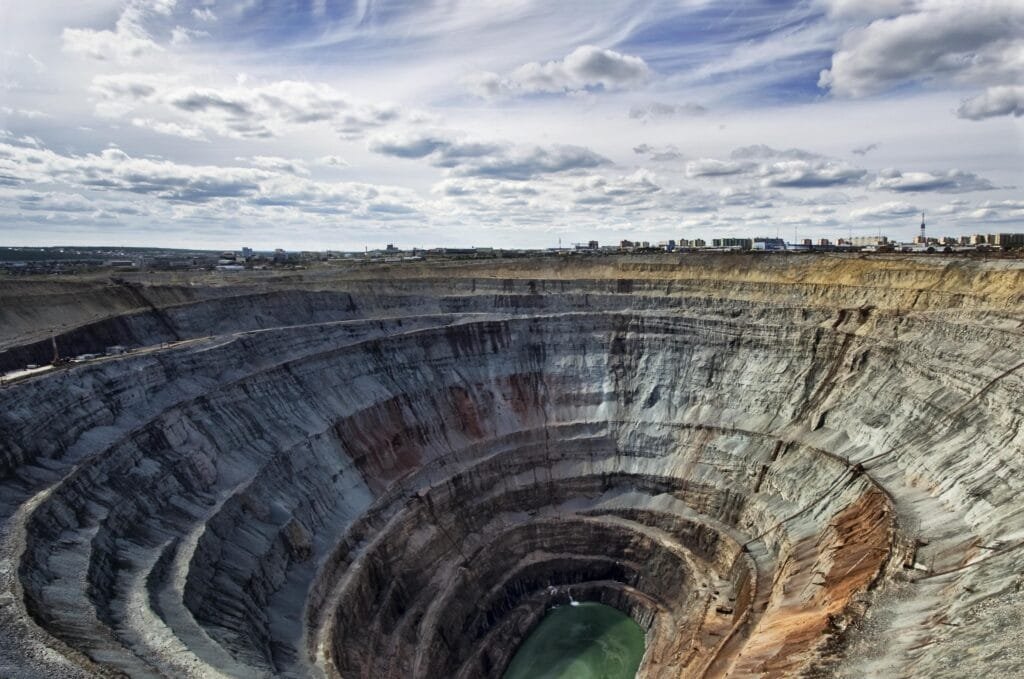
Care for your Diamond
Cleaning
Regularly clean your lab-grown diamond jewelry to remove dirt, oils, and residues that can dull its sparkle.
Soak the jewelry in a bowl of warm, soapy water (mild dish soap is suitable) for a few minutes.
Gently scrub with a soft toothbrush or a jewelry brush to remove debris from under the setting.
Rinse with clean water and pat dry with a soft, lint-free cloth.
Avoid Harsh Chemicals
Do not expose your diamonds to harsh chemicals, such as chlorine or bleach, which can damage the setting and reduce the diamond's brilliance.
Remove your jewelry before swimming in pools or using cleaning products.
Storage
Store your diamond jewelry separately in a jewelry box or pouch to prevent scratching.
It's best to store diamond pieces away from other gemstones or harder materials.
Professional Cleaning and Inspection
Consider having your diamond jewelry professionally cleaned and inspected at least once a year.
A professional jeweler can check for loose stones or signs of wear and tear.
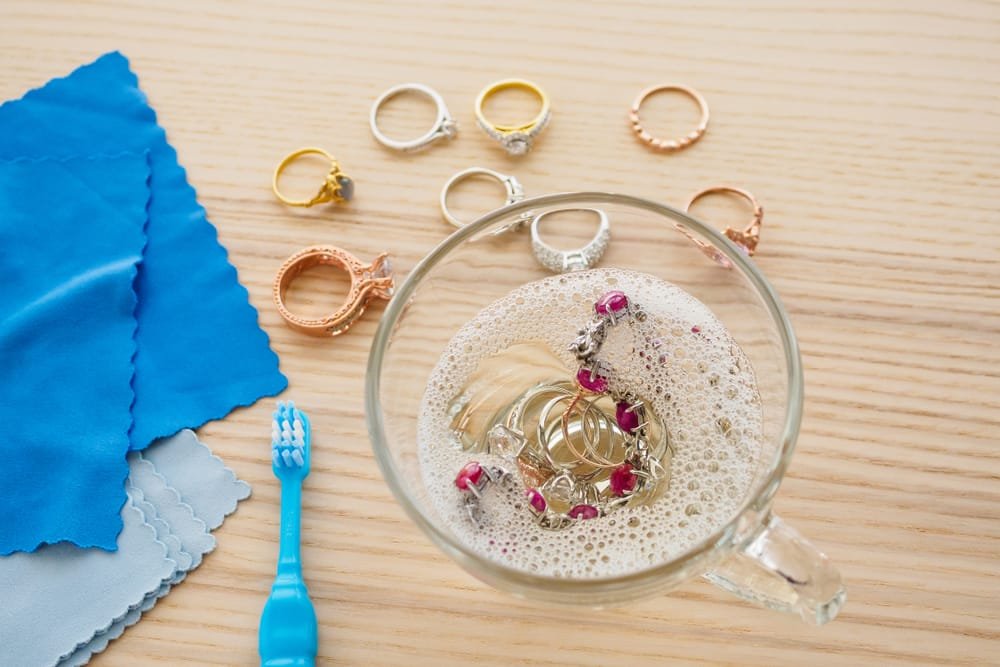
Lab Grown Diamond - FAQs
Are Lab-Grown Diamonds Ethical and Environmentally Friendly?
Yes, Vega’s lab-grown diamonds are generally considered more ethical and environmentally friendly than natural diamonds. They are created in controlled environments without the ethical concerns of traditional diamond mining, and their production has a lower environmental impact.
What Is the Quality of Lab-Grown Diamonds?
The quality of lab-grown diamonds can vary, just like natural diamonds. It depends on factors such as cut, color, clarity, and carat weight. Lab-grown diamonds can achieve high-quality grades and are available in a range of qualities to suit different preferences and budgets.
What Is My Budget for a Lab-Grown Diamond?
Your budget should be determined based on your financial capacity and what you're comfortable spending. Consider factors like the diamond's size, quality, and any additional costs for settings or jewelry design when setting your budget.
How Do I Choose the Right Shape and Cut for My Diamond?
Consider your style and what appeals to you visually. Popular shapes include round, princess, oval, and more, each offering a distinct look. Additionally, prioritize a well-cut diamond for maximum brilliance and sparkle.
What Carat Weight Should I Choose?
Decide on the carat weight that fits your desired size and budget. Consider factors like the size you desire and how it fits within your overall budget for the best balance between size and quality.
What About Diamond Certification?
Vega’s lab-grown diamond comes with a reputable certification, like those from the GIA or IGI. Certification verifies the diamond's quality and authenticity, providing valuable information about its cut, color, clarity, and carat weight. It helps ensure you're making an informed purchase.
Can I Customize My Jewelry Design?
Yes, Vega Diamonds offer customization services, allowing you to create a unique and personalized piece of jewelry that suits your individual style and preferences. Are There Any Additional Costs, such as taxes or shipping fees? Taxes on custom jewelry typically depend on various factors, Location, value, type of jewelry, etc
What Are the Delivery Timeframes?
You can expect to receive your lab-grown diamond jewelry within 10-12 days Can I repair or replace my Jewelry ? Yes















































